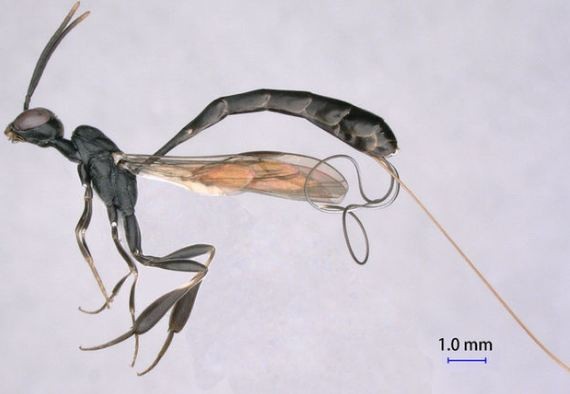Chinese scientists have discovered four new species of parasitoid wasps whose larvae are parasites that kill their hosts.
The four new species of Gasteruption pannuceum (G. pannuceum) belonging to the genus Gasteruption were discovered in the mountainous regions of China's Shaanxi and Ningxia provinces. G. pannuceum gets its name from the wrinkled sheath covering its midsection. The Latin word "pannuceus" means wrinkled.
The four new species are G. bicoloratum, G. huangshii, G. pannuceum and G. shengi.
These wasps have a body covering that resembles black leather studded grooves and stitches. The wasps range in size from 8 millimeters to 13 mm long. Females are typically larger than males.
The wasps have slender bodies and inflated, club-shaped hind legs. They also have elongated necks, and keep their abdomens raised and hind legs dangling during their slow, quiet flights. Their heads have a satin-like sheen and long eyes that extend almost to their mouth.
The larvae of these parasitoid wasps kill their hosts such as bees. The female G. pannuceum lays her eggs inside bee nests using a long, tube-like organ, called an ovipositor.
The emerging larvae feed on bee eggs and larvae, and the food reserves of the nest. The young wasps pupate in their hosts' nests and emerge as adults in spring.
A total of 28 species of Gasteruption were known to reside China before the new finds. A team led by Jiang-Li Tan, an entomologist in the College of Life Sciences at Northwest University discovered the four new species.
Tan said adult wasps "are not encountered frequently and, in many regions of the world, are rarely collected."
"I am not surprised to find four new species," said Tan.
She believes there are more wasp species waiting to be discovered but it won't be easy identifying a new species. The findings were published online Aug. 23 in the journal ZooKeys.



























